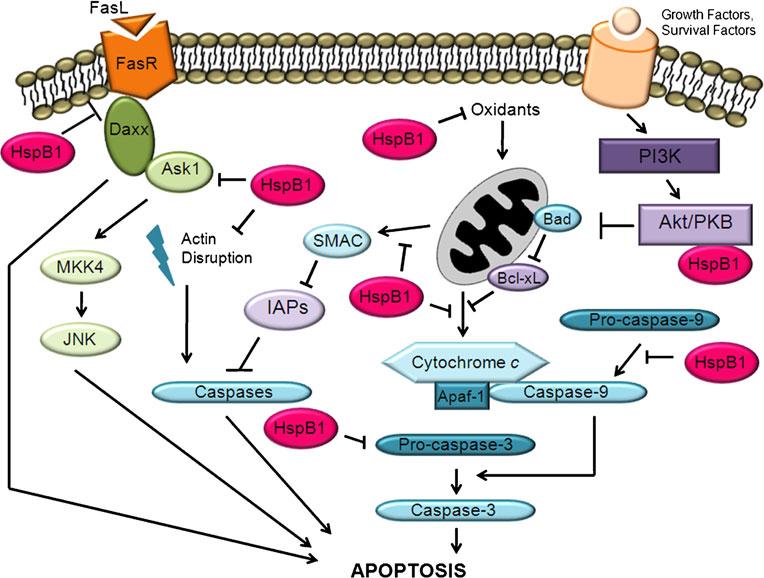
Our promise to you:
Guaranteed product quality, expert customer support.
 24x7 CUSTOMER SERVICE
24x7 CUSTOMER SERVICE
 CONTACT US TO ORDER
CONTACT US TO ORDER
HSPB1 Gene Editing 
Heat shock proteins (HSPs) are constitutively expressed under normal conditions, but are inducibly overexpressed under stressful conditions such as heat shock, hypoxia and pH shift. HSPs are mainly used as molecular chaperones and protect cells from harmful stimuli by stabilizing unfolded or misfolded peptides and repairing denatured proteins or promoting their degradation. Human HspB1 (also known as Hsp27 or Hsp28) is a true heat shock protein whose level is upregulated when cells are exposed to conditions that change protein folding, such as heat shock. HspB1 is an ATP-independent molecular chaperone and is involved in the protein refolding machinery. Its main function is to trap and store stress-induced misfolded polypeptides to avoid their aggregation and indirectly promote their refolding or proteolytic degradation. HspB1 is also deeply involved in the control of cytoskeletal organization and is famous for its antiapoptotic and antioxidant properties.
HspB1 Inhibition of Apoptosis
Much of the cytoprotective effect of HspB1 is due to the inhibition of programmed or apoptosis, controlled, energy-dependent cell death. In some diseases, including glaucoma, diabetic retinopathy, age-related macular degeneration, and retinal cell death occur through this process. Apoptosis can be induced by a variety of stimuli, including cytokines, oxidative stress, cytotoxic drugs, and ionizing radiation. Two different signaling transduction pathways result in apoptosis: the extrinsic and the intrinsic pathways. It is worth noting that mitochondria serve as a control point for cross-talk between the pathways. For example, pro-caspase-8 activated by the extrinsic pathway can promote cleavage of the BH3 domain-only death agonist protein (Bid), creating a proapoptotic fragment that translocates to the mitochondria and induces cytochrome c release in the intrinsic pathway. HspB1 directly interacts with several components of these pathways. Small oligomers of phosphorylated HspB1 interact with the Fas death domain associated protein, blocking its interaction with the Fas receptor and apoptosis signal regulating kinase 1 (Ask1), preventing caspase-independent apoptosis. In addition, HspB1 can bind to activated Ask1, causing the suppression of mitogen-activated protein kinase 4/Jun N-terminal kinase (MKK4/JNK) signaling, ultimately preventing cell death.
 Figure 1. Role of HspB1 in apoptosis. (O'Reilly A M, et al., 2010)
Figure 1. Role of HspB1 in apoptosis. (O'Reilly A M, et al., 2010)
Potential as A Clinical Therapeutic
HspB1 is also required for tumorigenic activity, cancer cell growth, metastasis formation and dissemination, maintenance of cancer stem cells, and modulation of the epithelial to mesenchymal transition process. It also plays a role in survival pathways and counteracts host anticancer response, such as senescence. HspB1 ability to provide cancer cells with resistance to multiple anticancer drugs, which in turn, unfortunately, stimulates HspB1 expression has also been described a long time ago. Therefore, HspB1 is considered as a highly interesting therapeutic target.
Elevated levels of HspB1 are observed in cells expressing proteins prone to aggregate or fibrillate and thus can interfere with pathological processes resulting in neurodegenerative diseases. In addition, pathological mutations that inhibit the chaperone activity of HspB1 provoke pathological diseases, such as axonal Charcot-Marie-Tooth disease, amyotrophic lateral sclerosis (ALS), and inherited peripheral and motor neuropathies. HspB1 has a variety of targets and functions that comprise the complex mechanisms of its neuroprotective role, indicating that multiple types and combinations of treatments may be developed. Electroinjection of HspB1 into RGCs protected them from apoptosis after ischemia-reperfusion injury. Moreover, a PEP-1-HspB1 fusion protein expression vector was used to directly transduce this fusion protein into primary neuronal cells, leading to increased cell viability in response to hydrogen peroxide-induced oxidative stress. Therefore, the use of gene therapy to deliver exogenous HspB1 to the retina may help treat retinal diseases. More and more evidence of the cyto- and neuroprotective roles of HspB1 in the retina shows that it has substantial potential to be a useful clinical therapeutic.
HspB1 Gene Editing Services
CRISPR/Cas9 PlatformCB at Creative Biogene is dedicated to offering comprehensive CRISPR/Cas9 gene editing services and products for academic research, biotech research and pharmaceutical drug discovery. With deep gene editing knowledge and extensive experience in experimental operation and data processing, we help you effectively control HSPB1 genes knockout/knockin/point mutation in cells or animals via CRISPR/Cas9 technology.
| Service | Details | Alternative cell lines or animal species |
| HSPB1 Gene Editing Cell Line Generation | gRNA design and synthesis Transfect the cell lines you're interested Select the high expression cells and sort monoclonal cell Validate the knockout/knockin/point mutation of HSPB1 by PCR and sequencing Provide cryogenically preserved vials of stable cells and final reports | HEK239T, Hela, HepG2, U87, Ba/F3, CHO, MDA-MB-453, MDA-MB-231NIH3T3, T47D, Neuro2a, MCF7, RKO, K562, RAW264.7, etc. |
| HSPB1 Gene Editing Animal Model Generation | HSPB1 gene conventional knockout animals HSPB1 gene conditional knockout animals HSPB1 point mutation animals HSPB1 knockin animals | Mouse, rat, rabbit, zebrafish, C. elegans, etc. |
Related Products at CRISPR/Cas9 PlatformCB
| CATALOG NO. | PRODUCT NAME | PRODUCT TYPE | INQUIRY |
| CCKM0271 | B6J-Hspb1em1Cd | Knockout Mouse | Inquiry |
| CDKM-0545 | B6J-Hspb1em1Cflox | Knockout Mouse | Inquiry |
| CLKO-0035 | HSPB1 KO Cell Lysate-HeLa | Knockout Cell lysate | Inquiry |
| CSC-RT0530 | Human HSPB1 Knockout Cell Line-HeLa | Pre-Made Knockout Cell Line | Inquiry |
References
- O'Reilly A M, et al. HspB1 (Hsp 27) expression and neuroprotection in the retina. Molecular neurobiology, 2010, 42(2): 124-132.
- Sun X, et al. HSPB1 as a novel regulator of ferroptotic cancer cell death. Oncogene, 2015, 34(45): 5617-5625.
- Muranova L K, et al. Mutations in HspB1 and hereditary neuropathies. Cell Stress and Chaperones, 2020, 25(4): 655-665.
- Arrigo A P. Mammalian HspB1 (Hsp27) is a molecular sensor linked to the physiology and environment of the cell. Cell Stress and Chaperones, 2017, 22(4): 517-529.